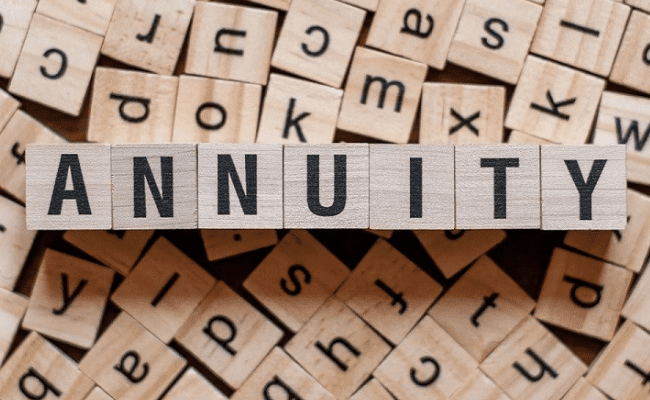Build tax relief and tax-free growth into your retirement and pension planning and pay into your pension today, before the end of the tax year in April 2023. If you’re in a position to add to your savings, private pensions are the most tax-efficient mainstream investment option for the majority of people.
The caveat is that you’re tying money up until retirement – age 55 at the earliest – so whatever you save must be cash you can leave untouched. However, in return, pensions offer very generous tax breaks. The key is to manage your annual allowance carefully.
From 6th April 2028, the NMPA (normal minimum pension age) will increase to 57. So, from 6th April 2028 you’ll need to be aged 57 or older before you can start taking money from your pension. There are still some circumstances where you can take money earlier, like if you’re suffering from ill health or have a protected pension age.

How much you can pay into your pension every year
The annual allowance is the maximum you can put into private pensions each year while still qualifying for the most generous tax treatment. If your annual income – including salary, income from savings and investments, and any other income you have coming in – is between £40,000 and £200,000, your allowance will normally be £40,000. If it is below £40,000, your annual allowance is the same as your income. If you have no income at all, it’s £3,600.
If your income is above £200,000, a “tapered annual allowance” may apply. The rules here are more complex – you also need to factor in any pension contributions you receive from your employer, and whether your total income including this money is above £240,000. If so, your annual allowance reduces by £1 for each £2 you’re over the threshold, until you get to £312,000. If you’re above that figure, your annual allowance is fixed at £4,000.
Once you know the value of your annual allowance, you can work out how much you have left for the current tax year. That will depend on how much you have paid into your pension plans in 2021-2022 so far. This is a total figure that applies across all your pension plans, so if you belong to several, you will need to add them up. If you belong only to defined contribution schemes that do not offer a guaranteed pension in retirement, this calculation is straightforward.
It is simply the total value of pension contributions made so far this tax year. Just remember that it is not only what you pay in yourself that counts, but also the tax relief you receive on those contributions, as well as any contributions made on your behalf by someone else, such as your employer.
If you belong to a defined benefit pension scheme, such as a final salary plan, the calculation is more complicated. The idea is to capture the amount by which your pension benefits in retirement have increased over the year. There is a complicated calculation for working that out, but your pension scheme administrator should be able to help. A financial adviser can also provide guidance.
Get it right or pay more tax
Getting the calculations right is important, because contributions above the annual allowance are subject to some quite expensive tax charges. You may still want to make these additional contributions, but it is important that you understand exactly where you stand.
If, on the other hand, you’re still some way off using your annual allowance in full, now is the time to consider topping up your contributions before the end of the tax year in order to grab those extra tax perks.
Make sure you carry over unused allowances
Savers butting up against their annual allowance may be able to make additional pension contributions using the carry forward rules. These allow you to use any unused annual allowance from the past three tax years to increase your contributions in the current one.
Let’s say, for example, that you have the full £40,000 annual allowance and that you made pensions contributions totalling £25,000, £30,000 and £35,000 in 2018-2019, 2019-2020, and 2020-2021. You would therefore have unused allowance of £30,000 from the past three years. Under the carry forward rules, you can add that to this year’s annual allowance, enabling you to contribute up to £70,000.
Should I keep contributing to my pension savings?
It is good practice to keep monitoring your pension savings to see if you are approaching your lifetime allowance. You can ask your pension provider(s) to give you an up-to-date valuation of your pension. Do make sure you have tracked down all of your current pension pots, as you may have some from earlier employments that you’ve forgotten about.
Generally, the risks of not paying into your pension outweigh the potential penalty associated with hitting your lifetime allowance. Diversifying into other tax efficient savings alongside your pensions may be sensible. But if they come at the expense of losing your employer pension contributions and tax relief, they are unlikely to be the most financially prudent option.
Talk to us
A financial adviser can help you to predict if your pension savings are likely to exceed your lifetime allowance. An IFA can also help you to find the most tax-efficient saving options going forward, so you can plan for your retirement alongside the current inflationary pressures. Please contact us and talk to one of our advisers about how we can help you.
PLEASE NOTE: Grosvenor Wealth Management Ltd is authorised and regulated by the Financial Conduct Authority. The value of investment can go down as well as up and you may not get back the original amount you invested. Tax treatment is dependent on individual circumstances and may be subject to change. Tax planning is not regulated by the Financial Conduct Authority.
Contact Us Form
Please complete this form if you wish to send us your questions or if you would like to request a call back.
We look forward to speaking with you.
Recent GWM articles that may be of interest
Smart Money July August 2023
Getting Retirement Ready Welcome to the July/August 2023 edition of Smart Money. In this issue, [...]
Are you emotionally prepared to retire?
Retirement can be an emotional time, many life changes are occurring and it’s very normal [...]
How do I prepare for retirement?
A trip of lifetime, more time with loved ones, securing financial freedom - these are [...]
Is now the time to buy an Annuity?
Sales of annuities have reached their highest level since 2014, surging 22% during the first [...]
Financial planning for your family
Raising a family is a marathon effort, as costly as it is rewarding. But financial [...]
Don’t fall victim to pension fraud
The end-goal of scammers is to persuade you to transfer your pension savings to a [...]







